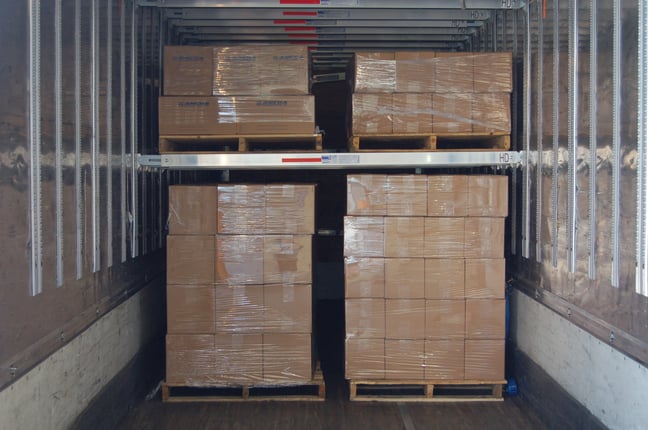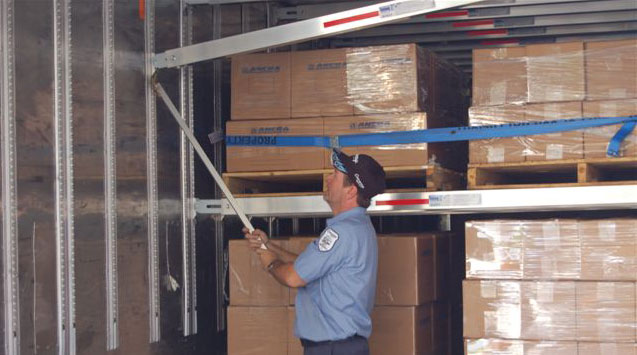REDWOOD LOGIN
Redwood PortalLTL
SCS
SCS Support
Rockfarm
Since the beginning of cargo logistics, one common problem that all shippers have is reducing damage to freight during transit. Whether it’s via trains, planes, or automobiles, shipping commodities and goods are challenging mainly due to two constants – gravity and physics. While shippers and cargo carriers do their best to keep freight secure, the reality is that cargo will shift during transit. A new system called Safe Stack has been created to provide LTL carriers with a more efficient method for loading cargo and freight into trailers, allowing the freight to ship more securely, reduce damage, and ensure it arrives at its destination in the same condition it was shipped.
 The Safe Stack System was established by an LTL carrier a few years ago, with the intention of solving a major problem in cargo logistics – damage to freight during transit. It is essentially a method for loading freight in storage containers or trailers for LTL or FTL carriers that keep the commodity secure and protected from in-transit damage. When used correctly, the Safe Stack System provides shippers with better handling of freight, reduces shrink and customer damage claims, decreases costs, and enhances the customer experience.
The Safe Stack System was established by an LTL carrier a few years ago, with the intention of solving a major problem in cargo logistics – damage to freight during transit. It is essentially a method for loading freight in storage containers or trailers for LTL or FTL carriers that keep the commodity secure and protected from in-transit damage. When used correctly, the Safe Stack System provides shippers with better handling of freight, reduces shrink and customer damage claims, decreases costs, and enhances the customer experience.
Essentially, a traditional Safe Stack System is loaded as described below:
• The cargo carrier reviews the freight and ensures it is loaded on solid pallets or skids.
• The freight (usually drums of cargo) is then loaded on the floor, near the nose of the trailer. This provides the forward base of the Safe Stack System.
• Once the initial skids are loaded and secured, the cargo load team will build a deck above the first loaded skids with Safe Stack loading beams. Once the beams are in place, they lay sheets of plywood on top of the beams. When the plywood is installed, it provides a flat surface, in which boxes of dry goods would be placed for added strength and integrity.
• The second row of cargo is then placed directly behind the first ‘stack’ of cargo, including heavier equipment (like machines or solid supplies). This provides additional strength and integrity for the forward-facing cargo, to reduce movement during transit. In this same row, the pallets or skids are loaded taller than the initial row. The goal is to have this second row of cargo reach near the top of the trailer – again, to minimize the potential of cargo shifting during transit.
• Each corresponding layer of freight is staggered in such a way that the palletized shipments maintain strength and integrity. All layers of stacks are secured by straps to the deck or the trailer walls, wrapped with shrink wrap, and fully secured.
 It’s rather easy to understand the benefits that Safe Stack Systems provide both the carrier and the customer. First and foremost, the shipments are much more likely to arrive at their destination in the same condition as they were initially shipped. Since a major expense to LTL shippers is damaged freight claims, this type of load system not only reduces these expenses but also provides multiple customers with better service.
It’s rather easy to understand the benefits that Safe Stack Systems provide both the carrier and the customer. First and foremost, the shipments are much more likely to arrive at their destination in the same condition as they were initially shipped. Since a major expense to LTL shippers is damaged freight claims, this type of load system not only reduces these expenses but also provides multiple customers with better service.
• The shipper of the goods is benefited by not having to replace damaged goods on their dime until claims are awarded.
• The receiver of the goods can use the shipment quickly – without having to wait for replacements.
• The end customer receives a superior product.
The possible drawbacks or hurdles of activating a Safe Stack loading system includes:
• Additional time and resources in preparing loads for shipment. A key to the Safe Stack System is properly loading cargo onto solid skids and pallets. This requires more people, time, payroll, and resources.
• Additional supplies and training needed for loading. The Safe Stack System requires training cargo loading crews and drivers. Since not all loads are identical, properly activating a Safe Stack System requires an ability to solve problems and improvise.
While the drawbacks are superficial, the benefits of improving customer service, reducing damage claims, and decreasing costs across the board are much greater. Safe Stack Systems are not cookie cutter solutions. Each type of trailer, load, and shipment carrier should customize a loading process that ensures the cargo is fully secured, based on the variables. Cargo logistics companies, LTL and FTL shippers, and others in the supply chain should carefully research the Safe Stack System to determine which methods or procedures are best suited for their customers and capabilities.